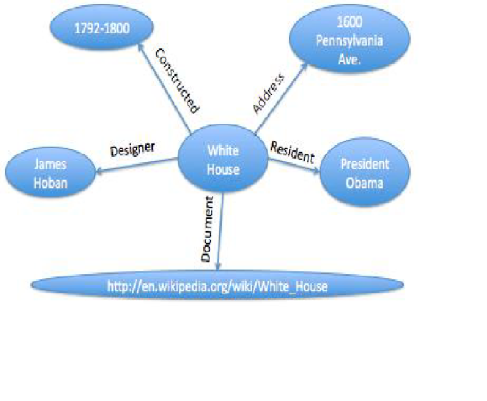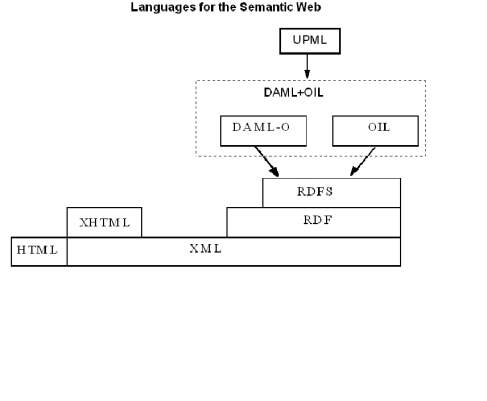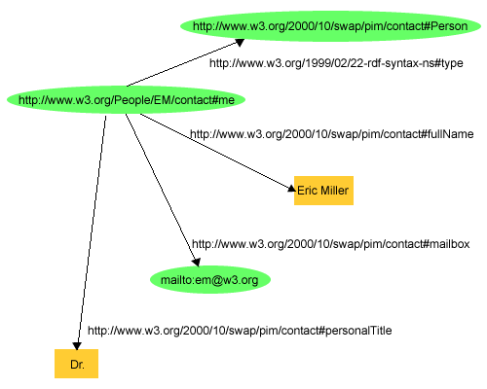Welcome to my second post on Semantic Web and its real-time apps So, to get started I would like to recap some of the points I enumerated on in my last post.
We discussed what is the scope, Technology landscape and research issues and topics revolving around Semantic Web. In this post, I would like to discuss some of the more involved and intricate terminologies- RDF, RDFS, OWL etc.
To give you a real-time example of how a concept is modeled, check out the following diagram
The ovals indicate the entities and links depict the relationships among the entities.
Where Open Data meets the Semantic Web it results in Linked Open Data.While modeling such entities, it is important to keep the rules of Linked Data in mind such as 1)Use URIs as names for things. An example of a URI is any URL.For Example : http://www.domain.com/whitehouse is the URI for the resource White house on the internet.2) When someone looks up a URI, provide useful information, using the standards such as RDF and SPARQL. These terms may sound a little new- but dont worry! I will be covering more in-depth the technology hosted by Semantic Web in my later posts.
The realization of Semantic Web is possible by the use of languages that provide: a) Formal syntax and formal semantics to enable automated processing of content.b) Standardized vocabulary enabling automatic and human agents to share information and knowledge.
Keeping these requirements in mind, several languages serve as the basis for building a standardized domain vocabulary the foremost being RDF, RDFS and OWL.To depict the technology stack of the Semantic Web, the following diagram would make sense from an architectural point of view.
Coming to the Resource Description Framework(RDF), 1. It is a standard for Web meta data developed by the World Wide Web Consortium (W3C) 2. It is suitable for describing any Web resources 3.Provide interoperability between applications that exchange machine-understandable information on the Web
Adding a further note on RDF , It is an XML application and adds a simple data model on top of XML.This data model provides three elements:•Objects •Properties •Values of properties.
In case of RDF Schema (RDFS), it defines additional modelling primitives on top of RDF and allows one to define Classes (concepts), I the Inheritance hierarchy for classes and properties and domain and range restrictions for properties.In other words, RDF is the building block of RDFS which in turn helps in the formulation of OWL (domain vocabulary specification)
An ontology is a shared and common understanding of some domain that can be communicated between people and application systems. It is a formal, explicit specification of a shared conceptualization.
Looking at all these generic terms, we need to define a use-case for the kinds and satisfiability of tools that mark up vocabularies for the Semantic Web. Few key requirements being Formal languages to express and represent ontologies , Editors and semi-automatic construction to build new ontologies , Reusing and Merging Ontologies ,Reasoning Service, Annotation tools , Information access and navigation , Translation and integration Services
I will be covering more details of the tools and open source projects as well as other related research topics revolving around Semantic Web in my next post.Till then cya!!



